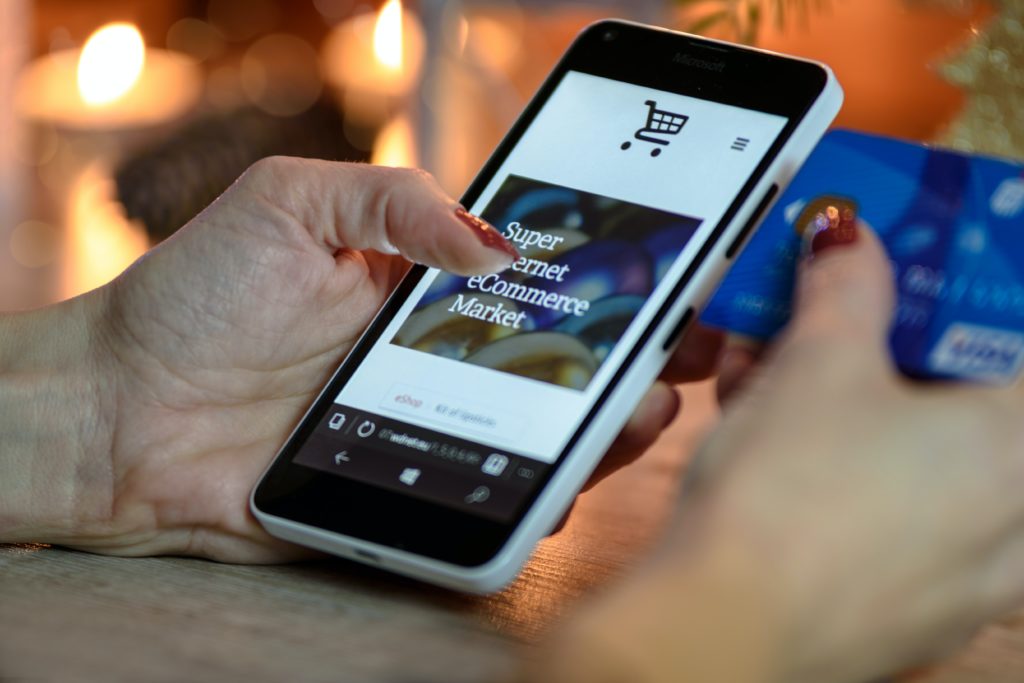
Major global events throughout modern history have demonstrated that the changes in consumer behaviour they have brought about tend to have staying power long after. During World War II, massive food shortages spiked up demand for products with longer shelf lives. According to the Boston Consulting Group (BCG), this drove the consumer goods industry to increase the production of canned goods by 230%, with the event being responsible for the large proportion of canned products still available to this day.
Turning to a more recent event that more closely parallels COVID-19, the acute respiratory syndrome (SARS) outbreak that spread throughout China in 2003 is considered a key driver behind China’s subsequent emergence as the world’s largest and most sophisticated e-commerce market. Today, online sales in China are roughly three times greater than the US, the world’s second largest e-commerce market. 2003 is when both Alibaba and JD.com, the country’s two dominant e-commerce players who have both played a pivotal role in the channel’s advancement, first launched their online platforms.
If these and other history altering events are anything to go by, the COVD-19 pandemic is likely to yield shifts in consumption patterns that will endure well past the crisis subsiding. Identifying and investing in the shopping trends that are likely to be permanent rather than transient is critical, and all signs point to the acceleration of e-commerce growth staying the course.
For most grocery retailers, under their current operating models, online delivery and curbside pickups are not only less profitable than in-store purchases, but in some instances, these services are operated at a loss. Many retailers are also not equipped to handle the recent explosion in demand for online shopping, leading to customer dissatisfaction arising from an underwhelming or frustrating online shopping experience
Given the rapid pace of change and a multitude of stakeholder and economic pressures, it is understandable that some suppliers and retailers will opt for shortcuts and stopgap measures over bold, proactive solutions. But those who are willing to commit to a complete overhaul of their websites and apps, inventory management, and logistics capabilities, are likely to not only survive but thrive through this sea change. The good news is that despite the financial pressures, by optimizing one’s omnichannel network and finding alternative e-commerce related revenue streams and partnership opportunities, retailers do not have to be swimming in liquidity to fund these infrastructure upgrades.
Online Shopping is Here to Stay
Before delving into the revamps and optimization opportunities suppliers and retailers could be taking to secure a stronger financial future in the online channel, it bears repeating some of the statistics that point to how dramatic an uptick the channel is experiencing. It is also worth paying attention to the many market research studies from around the globe in which the consumers surveyed provide a strong indication that they will continue to shop online more frequently even once conditions normalize.
According to figures from Bain & Company, the online channel’s share of sales in the US and UK expanded from 5.1% and 8.1% respectively at the end of 2019 to 6.6% and 12.4% at the peak of the crisis. In markets such as Italy and Germany, where online grocery shopping had been slower to take off, online sales penetration practically doubled overnight, expanding in Italy from 2 to 4.3% and in Germany from 1.5 to 2.9%. The sales volumes realized are not fully reflective of the spikes in actual demand, as many shoppers who attempted to make online orders were unable to do so as retailers struggled to ramp up their capacity to match the pace of rising demand.
Essentially, the arrival of COVID-19 resulted in shifts that were expected to gradually tick along over a five year stretch suddenly taking place in a matter of months. For context, it took twenty years for online grocery sales in the UK to capture to 7% of all grocery sales, and in less than three months, the channel’s share of market leapfrogged another 5% to reach 13% overall.
The pandemic prompted those who were otherwise content to do all their grocery shopping in-store to experiment with online shopping as an alternative for the first time. This has fast-tracked a wave of fresh adopters, many of whom are likely to continue with this habit long term. According to Bain, over the course of the pandemic, 41% of all US online grocery shoppers were first time users, with the consultancy predicting that between 35 to 45% of these new adopters will continue to shop online even once stay at home ordinances and social distancing concerns are alleviated. Research published by UBS reveals that 71% of UK respondents stated that they will shop online “as often or more after the COVID -19 situation improves”.
Bain forecasts that collectively the US, UK, Germany and France will witness 350 million additional online grocery orders valued at a surplus of $36 billion in sales in 2020 compared with 2019. Accordingly, while grocers are racing against the clock to ramp up online capacity, they need to do so deliberately and strategically such that they develop the infrastructure and operating model to operate profitably within the channel over the long term.

Growth Does Not Always Equal Profit
Part of the reason that e-commerce in China has proven so lucrative is that the country has conditions working in its favour, such as densely populated urban centres and a relatively affordable labour force. For most retailers elsewhere, in-stores sales offer far better margins than their online counterparts, and in many cases, the profits earned in-store are allocated towards subsidizing their nascent e-commerce operations. Pre-COVID, for a retailer whose e-commerce sales accounted for less than 10% of total sales and were growing at a moderate rate of 1% per annum, improving channel margins was treated with less urgency and considered more of a long-term play.
Online order fulfillment and deliveries come with added costs ranging from website management, to order picking and packaging, and last mile shipments. There are also higher rates of costly product returns as customers are unable to see and touch the products prior to purchase. RSR Research estimates that online orders cost retailers 10-15% more to fulfill than in-store sales. According to Bain, the operating margin of in-store sales are already quite slim at between 2-4%. So, unless efficiencies can be gained or additional revenues earned, the cannibalization of in-store sales could put retailers into negative earnings territory.
Target in the US reported that as digital sales rose by 141% in Q1, gross margin fell by 450 basis points over the same period. “Our first quarter digital volumes weren’t anticipated for another three years… It was an extreme test of our model and our team,” Target Chief Operating Officer John Mulligan stated on a May 20 conference call.
In the UK, the two largest supermarket groups Tesco and Sainsbury have both revealed that even though overall sales revenues have grown in 2020 as people consume more food at home, they will end 2020 with roughly the same profits as they did in 2019. This is due partly to the high costs associated with expanding online delivery operations. Simon Roberts, Sainsbury’s CEO, has stated that COVID-19 has been “moving sales out of our most profitable convenience channel and driving a huge step-up in online grocery participation, our least profitable channel.”
For suppliers and retailers, continuing with the status quo or enacting reactionary measures are not viable options. Skimming costs by neglecting to upgrade digital infrastructure and/or delivering incomplete orders due to out-of-stocks and random product substitutions will likely result in customer churn. Conversely, charging additional order fees to fund these investments could prove challenging in an environment where shoppers are increasingly cost-conscious. In the UK, Amazon has announced that its Prime members will be eligible for free delivery from Amazon Fresh, a move that will prove challenging for other online grocers in the market who are currently charging for fresh delivery or are encouraging customers to move to the click & collect model. Clearly, a well thought out plan is required to roll-out a sustainable online offering that fosters growth while also generating profits.

Advantage Perspective: Improving Channel Economics by Working Together
Given the moderate size and growth rates of the segment to date, many offline retailers had opted for the simpler route of replicating their in-store offering online and fulfilling orders manually by picking products off of the shelves of their brick and mortar outlets. Bain believes that through investments in more automated fulfillment options and the conversion of some outlets into “dark” stores, operating margins could improve by as much as 12%. Supermarket layouts and planograms are designed primarily with the shopper in mind, so even if online orders are fulfilled during hours that stores are closed to the public, picking speed and efficiency will not match those of dark stores and stores with dedicated micro-fulfillment centres (automated fulfillment centres located within existing stores).
The good news for retailers who are successful in earning their shoppers’ trust within the online space is that profits should improve organically over time. As households gain a higher comfort level purchasing the bulk of their groceries online, the number of items per order should increase in turn. In the UK, online supermarket Ocado reported sales growth in Q1 of 27%, with profit rising by almost 90% based on demand for fewer but larger deliveries.
There are also revenue and supplier partnership opportunities to pursue beyond the sales transaction itself related to co-promotions and customer insight sharing. In addition to straight forward banner ads, collaborative category leaders could opt to have their brands featured more prominently on category pages and appear more readily in product search results. Promotional opportunities could include suppliers adding free samples into virtual shopping baskets. In terms of customer insights, information on basket mix and size, frequency of purchase, and the effectiveness of various activation tactics are key data points that online transactions are capturing. Suppliers and retailers could leverage these analytics to better understand the consumer and co-market to them more effectively.
Suppliers, just as with retailers, cannot cut and paste their offline offerings and hope for success. They also have a contribution to make towards channel optimization by adapting their branding and packaging to be more e-commerce friendly. On the packaging and shipment front, avoiding awkwardly shaped items and offering a combination of durable and lightweight packaging will contribute towards lower distribution costs and product integrity. While on the brand design and imagery front, consideration should be given towards the fact that online shopper browsing is very different from perusing in-store aisles. High quality photography and compelling visual imagery will stand out and capture the online shopper’s attention.
Once suppliers and retailers collectively achieve a compelling digital offering allowing retailers to fulfill orders on multiple categories, especially “fresh”, they can then consider moving into the territory of charging fees to their customers for premium services. In the US, it is rumoured that Walmart will soon be unveiling a subscription service called Walmart+, aimed at taking on Amazon Prime. According to reporting from Forbes, subscribers will benefit from same-day delivery, early access to product deals, and discounts on other Walmart operated and branded businesses such as gas stations and insurance.
Now is not the time for complacency. The shift in demand towards online grocery shopping is rapid and here to stay, and those who are unable to elevate their online offering will be left behind. BCG believes that the return on investment of a major retail transformation that is started pre-emptively in a downturn can be as high as 50%. Furthermore, companies that invest during a downturn experience growth that is 8% higher than those that retrench.
Walmart recently announced that it will allocate $3.5 billion over the next five years towards its Canadian operations, with a significant chunk going towards its online service offerings in the form of two new distribution centres and the roll-out of merchandise pick up services at 270 store locations.
Revamps, and if necessary, complete overhauls of e-commerce platforms and infrastructure can be pursued in-house if the financial capital and competencies are enabled, but it is important for businesses to play to their strengths and recognize if e-commerce excellence is not in their wheelhouse. Strategic partnerships and acquisitions are a viable way to attain outside expertise and accelerate capabilities.
There have been numerous examples of brick and mortar retailers partnering with e-commerce specialists. Kroger in the US and Sobeys in Canada, as examples, are leveraging the robotics-driven automated grocery fulfillment capabilities of the UK’s Ocado. Both partnerships were struck pre-pandemic (in 2018), and the proactiveness and foresight shown have put both retailers in a position to capitalize on the recent spike in online demand while others are caught scrambling to weather the storm.
Sources
- The $2.5 Trillion Opportunity for Grocers That Are First to the Future
- How to Ramp Up Online Grocery—without Breaking the Bank
- Walmart May Have Just One-Upped Amazon With Walmart+
- Walmart Canada investing $3.5 billion to improve service in-store, online
- Why supermarkets are struggling to profit from the online grocery boom
- Grocers urgently need to fix broken online business model, as pandemic shifts more to web, report says
- In The Race To Profitable E-Commerce, Walmart Will Win
- As virus-wary shoppers opt for online purchases, retailers pay the price
- E-commerce booms as retail sales plummet to record decline





